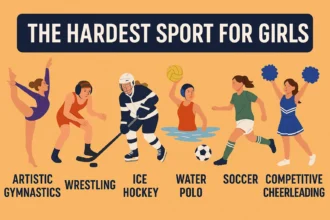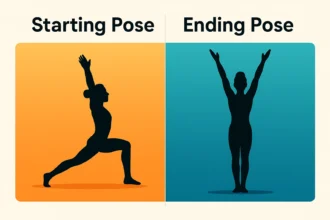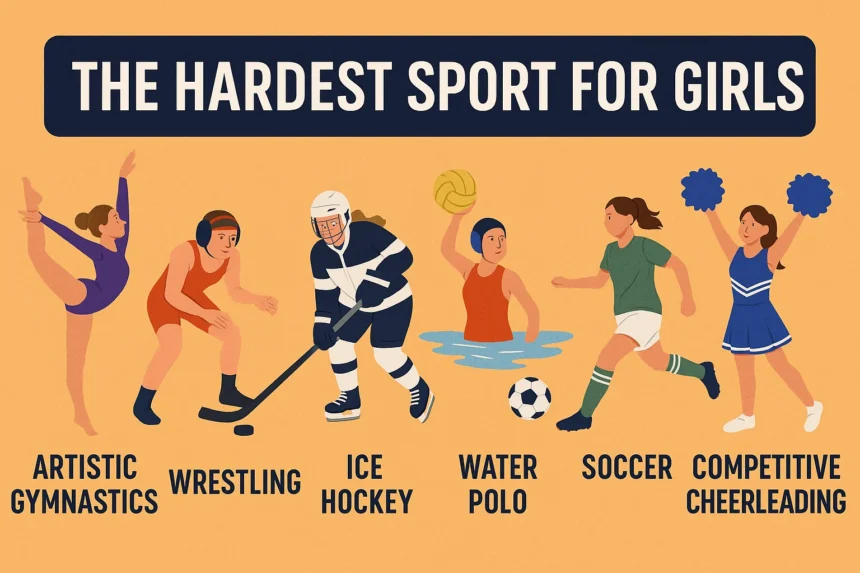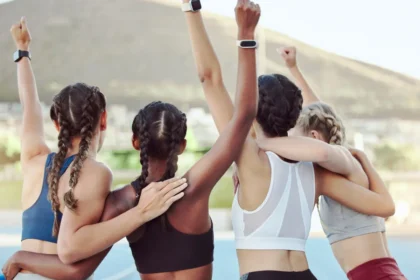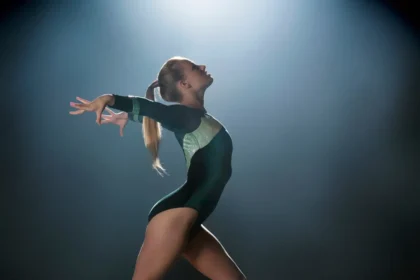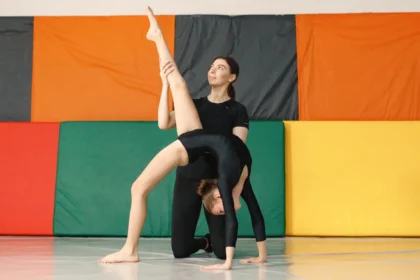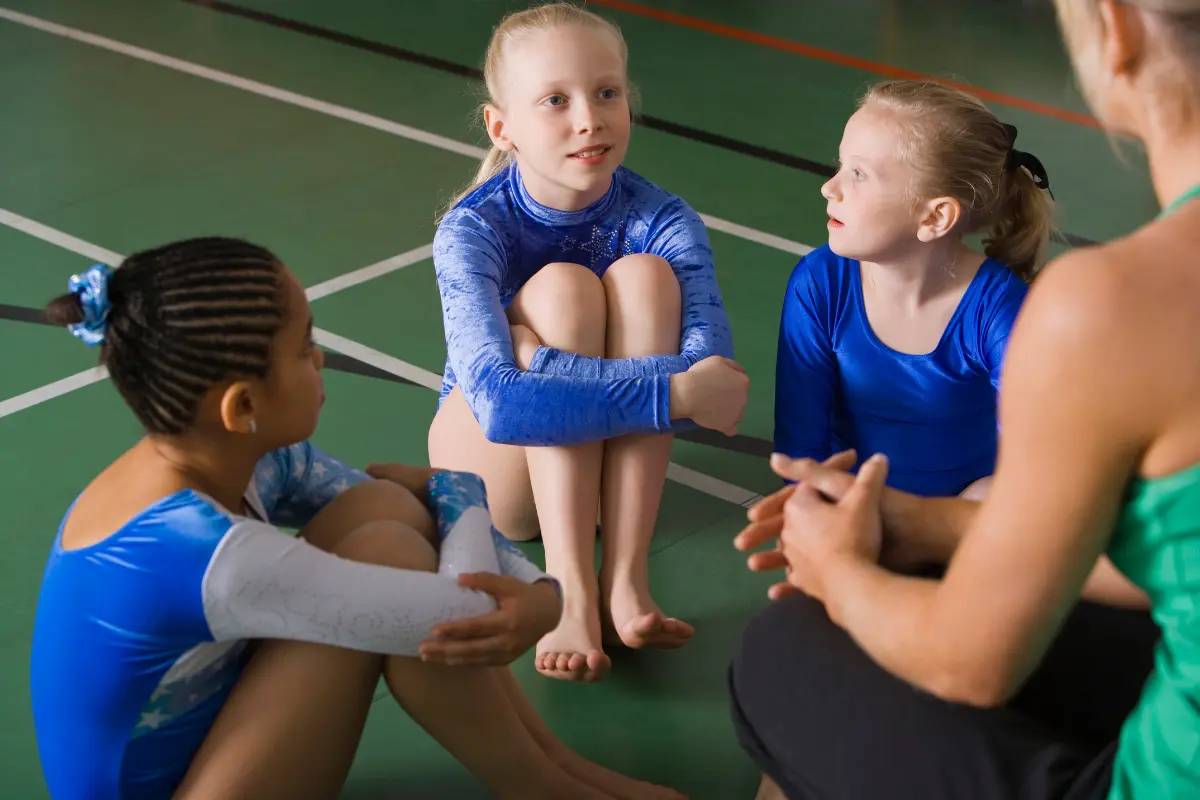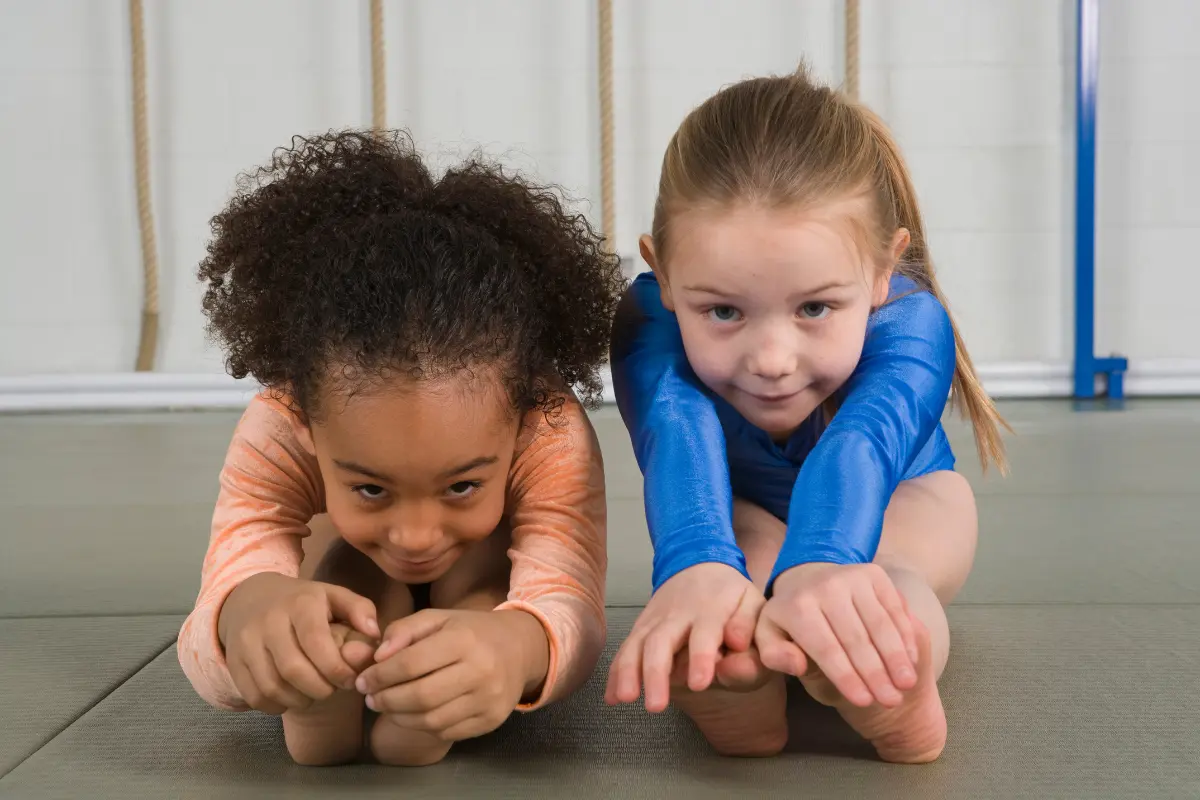The idea of the “hardest sport” is always somewhat subjective. After all, toughness comes in many forms—grueling training hours, complex technical skills, intense mental focus, or high injury risk. But when we look at measurable factors like weekly workload, physical demands, technical difficulty, and documented injury rates, a pattern begins to emerge.
Across these criteria, six sports consistently rank among the most demanding for girls:
- Artistic Gymnastics
- Wrestling
- Ice Hockey
- Water Polo
- Soccer
- Competitive Cheerleading
These sports push young female athletes to their limits—physically, mentally, and emotionally—often beginning before high school. They also rank among the highest in injury risk and total training volume at the youth, high school, and collegiate levels.
Artistic Gymnastics
Artistic gymnastics stands out as one of the most demanding sports for girls—not just for its technical precision, but for the sheer physical and emotional toll it takes at a young age.
By age 12 or 13, elite gymnasts often train 30 to 35 hours per week, according to ChalkBucket Gymnastics Forum—a schedule more in line with professional athletes than middle school students. This intensive regimen leaves little time for recovery or outside life.
Injury rates reflect the strain. According to NCAA data:
- Women’s gymnastics sees about 9.2 injuries per 1,000 athlete-exposures (AEs)—one of the highest rates among women’s collegiate sports.
- Competition injuries are nearly twice as frequent as those during practice.
- Severe injuries (requiring surgery or >21 days off) occur at 1.40 per 1,000 AEs, second only to men’s wrestling (PubMed).
The sport demands an extreme combination of explosive power, flexibility, balance, coordination, and upper-body strength. With minimal off-season, the risk of overuse injuries, especially to the spine, wrists, and ankles, is constant. Small errors on the beam, bars, or vault can result in major consequences.
Wrestling
Wrestling is one of the fastest-growing sports for girls, but it’s also one of the most physically punishing.
A decade-long NCAA study found that women’s wrestling leads all collegiate sports in severe injury rates, with 1.73 injuries per 1,000 AEs—higher than any other sport for either gender (PubMed). These injuries typically include joint dislocations, ligament tears, and surgeries.
High school data mirrors this trend. Over 50% of all female wrestling injuries occur between ages 14 and 18, just as athletes are still developing physically (PMC). This timing amplifies the risks of long-term damage.
Adding to the physical grind is the sport’s emphasis on weight management. Wrestlers often must cut or maintain weight for competition year-round, creating hormonal strain and psychological stress unique to combat sports.
Ice Hockey
Ice hockey is often underrated in difficulty, but it has earned its place as one of the most challenging sports for girls, especially as the women’s game becomes faster and more physical.
Even without full checking at many youth levels, female hockey players experience notable head-impact rates. According to PMC-published helmet studies, college women sustain 0.2 to 3.2 head impacts per AE, nearly on par with men. Subconcussive trauma is a growing concern.
Notably, when Sweden’s top women’s league introduced legal body checking in 2022, concussion rates actually declined, highlighting how physical and structured today’s game has become (AP News).
Physically, the sport involves short anaerobic sprint shifts, gear that adds extra load, and split-second decision-making while skating at high speed. Cold environments, balance challenges, and technical puck control push the athlete in all directions.
Water Polo
Water polo combines elements of swimming, wrestling, and handball, all while treading water. For female athletes, it’s among the most aerobically and physically demanding sports in existence.
Players must perform a continuous egg-beater kick, sprint across the pool, wrestle for position, and launch powerful shots, all without touching the bottom. PubMed notes that elite female water polo players reach VO₂ max levels similar to mid-distance swimmers.
Most club-level athletes train 8 sessions per week, swimming 30–40 km, plus additional strength training (PMC). The physical load is equivalent to elite endurance sports.
Constant underwater contact leads to frequent shoulder overuse injuries and facial trauma from elbows or close-range collisions. Meanwhile, the game demands quick decision-making under exhaustion, making it as mentally taxing as it is physical.
Soccer
Soccer may look graceful from the stands, but for girls, it’s one of the most demanding sports—especially when it comes to concussions and cardiovascular load.
Multiple studies now rank girls’ soccer as the leading concussion sport outside of boys’ football, with 8 to 8.4 concussions per 10,000 games or practices—more than twice the rate for boys (Axios, Brock USA).
Factors include:
- Hormonal differences
- Lower baseline neck strength
- Frequent use of headers
Physically, soccer requires players to cover 5 to 7 miles per game, mixing steady-state running with high-intensity sprints. The year-round schedule, including club, school, and tournament play, places constant stress on joints, muscles, and mental focus.
Competitive Cheerleading
Often misunderstood as performance art, competitive cheer is one of the most dangerous and physically demanding sports for girls.
According to the National Center for Catastrophic Sports Injury Research, cheerleading accounts for 65% to 71% of all catastrophic injuries among high school and college-aged female athletes, more than any other sport (NeuLife). These include spinal injuries, skull fractures, and fatalities.
ER data backs it up: 92% of cheer-related injury patients are girls aged 14–18 (PMC).
The sport includes stunts, tumbling, pyramids, and lifts, with athletes being tossed and caught mid-air. Hard floors, limited padding, and minimal error margin make the consequences of a misstep severe.
With year-round competition, travel, and intense training schedules, cheerleaders often match gymnasts in hours and expectations. The sport demands core strength, coordination, timing, and fearless trust.
| Sport | Training Time | Physical Challenge | Injury Risk | Mental Pressure |
|---|---|---|---|---|
| Gymnastics | 30–35 hrs/week | Very High – strength, power, flexibility | Very High (2nd in severe injuries) | Very High (starts young, perfection) |
| Wrestling | 15–20 hrs/week | Very High – strength, endurance, contact | Highest (severe injuries) | High (weight cutting, pressure) |
| Ice Hockey | 10–15 hrs/week | High – speed, balance, power | High (head impacts) | Moderate–High |
| Water Polo | 8+ pool sessions/week | Very High – stamina, strength in water | High (shoulders, face) | High (fatigue, constant contact) |
| Soccer | 5–7 days/week | High – running, sprints | Very High (concussions) | High (year-round play) |
| Cheerleading | Comparable to gymnastics | High – stunts, timing | Highest (catastrophic injuries) | Very High (fear, trust, pressure) |
What sets these sports apart is that they rank near the top in every major category:
- Skill complexity
- Physical stress
- Injury risk
- Mental and emotional pressure
These aren’t just sports, they’re serious tests of resilience. Any girl who trains and competes at a high level in one of them is doing something truly remarkable.


